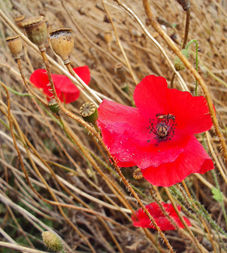- Protected Species Licensing
- Ecological Impact Assessment (EcIA)
- Ecological Research
- Sustainability
- Historic Buildings & Landscapes
- Renewable Energy
- Ecological Management Planning
- Ecological Clerk of Works
- Brownfield Regeneration
- Code for Sustainable Homes and BREEAM
- Entomology
- Wildlife Gardening
Brownfield Regeneration
Brownfield sites are often defined as ‘previously-developed land is that which is or was occupied by a permanent structure’. The regeneration and re-use of brownfield sites has long been an essential part of the government’s policy for new development. However, brownfield sites can also be areas of rich biodiversity and careful ecological evaluation and assessment of brownfield sites is frequently required during the planning process.
Brownfield sites often come with a suite of ecological factors that differ from sites in the open countryside and greenfield land. This is mostly due to neglect and animals and plants are quick to colonise undisturbed and unmanaged areas of land. In addition, brownfield sites have often had a history of disturbance and in the case of quarries and brickpits, excavation and soil movement. This can result in a varied topography, the presence of ponds and ephemeral water bodies, log piles, rubble piles and bare ground, all of which can be habitats to protected and notable species such as invertebrates, reptiles, great crested newts and plants. In addition derelict buildings, particularly those which have been unused for several years, can become valuable sites for roosting bats.
Our ecological consultants have experience of surveying brownfield habitats, particularly with regard to the specific ecological challenges they present when colonised by protected and notable species such as reptiles, amphibians and bats. Entomologists at Windrush Ecology Ltd. have particular expertise in the assessment of brownfield sites and brownfield regeneration, as well as providing advice on habitat management plans for insect species, particularly butterflies, moths, beetles, bees and wasps.
Recent projects have included old quarries, gravel extraction and minerals & waste sites within Oxfordshire and the south-east of England, as well as habitat creation projects including sand/gravel banks, ponds, species-rich meadows and limestone grassland.
Related surveys
Related content
The Windrush Innovation Centre, Howbery Park, Benson Lane, Crowmarsh Gifford, Wallingford, Oxfordshire OX10 8BA
Hexagon Business Centre, Avenue 4, Station Lane, Witney, Oxfordshire OX28 4BN
Tel: 01491 822681
Tel: 01993 220273
Copyright ©2025 Windrush Ecology Ltd.
Email: enquiry@windrushecology.com




_gallery.jpg)




